21 Mindfulness Exercises & Activities For Adults (+ PDF)
 People who meditate are happier, healthier, and more successful than those who don’t.
People who meditate are happier, healthier, and more successful than those who don’t.
The amazing benefits of practicing meditation and mindfulness are available to everyone who has the time to practice these skills.
If you have already tried meditation, mindfulness or other positive psychology interventions before, you may have thought it “wasn’t for you” after a couple of tries.
But like any skill, mindfulness takes practice. Try it again! Sometimes the only thing standing between our goals and us is a little bit of direction.
Hopefully, this article can provide the direction for you to give mindfulness a try either in your own life, your therapy, or your coaching sessions. Let’s dive in!
Before you read on, we thought you might like to download our three Mindfulness Exercises for free. These science-based, comprehensive exercises will not only help you cultivate a sense of inner peace throughout your daily life but will also give you the tools to enhance the mindfulness of your clients, students, or employees.
This Article Contains:
- 4 Mindfulness Activities for Groups and Group Therapy
- 5 Fun Mindfulness Interventions, Techniques, and Worksheets for Adults
- Introducing Dialectical Behavioral Therapy (DBT)
- 5 Simple Mindfulness Exercises from Dialectical Behavioural Therapy
- Mindfulness Techniques for Depression, Anger, Addiction, and Anxiety
- A Take-Home Message
- References
4 Mindfulness Activities for Groups and Group Therapy
Group therapy that incorporates mindfulness has shown some promising results. It is as effective as cognitive-behavioral therapy (CBT), a staple of the clinical psychology world (Kocovski, Fleming, Hawley, Huta, & Antony, 2013).
There is also evidence that group mindfulness meditation therapy is as effective as individual CBT (Sundquist et al., 2015). In a global climate with few clinical psychologists in relation to the need for them, and in a time when individual therapy time is limited and expensive, the proven efficacy of group-based therapy is great news.
Even if you do not feel a need to visit a therapist, there are mindfulness-focused groups that share and deepen meditation practice (Brach, 2016). Here are four exercises from such groups.
Fleming & Kocovski’s Treatment Plan
One such group mindfulness-based treatment program by Fleming & Kocovski (2007) aimed to reduce social anxiety. It is a good example of how mindfulness exercises can be incorporated into a group setting for its various benefits.
In this example, the exercises used have proven effective for treating social anxiety disorder in particular; however, they can be applied to many other group settings with positive results.
The treatment plan involves groups of about 8 members meeting for 2 hours, every week for 12 weeks. The first portion of each session is devoted to a short mindfulness exercise and discussion.
The treatment plan’s mindfulness exercises went as follows:
- Session 1: Raisin Exercise;
- Session 2: Body Scan;
- Session 3: Mindful Seeing;
- Session 4: Mindfulness of the breath, sounds, and thoughts;
- Session 5: Acceptance of thoughts and feelings exercise;
- Session 6: Acceptance of Social Anxiety;
- Session 7: Mountain Meditation;
- Session 8: Acceptance of Social Anxiety
- Session 9: Breath Focus without Guidance;
- Session 10: Lake Meditation;
- Session 11: Non guided Breath Focus.
There are many different mindfulness exercises mentioned here which were specifically put together for the aim of reducing social anxiety disorder; however, the first three exercises are commonly used in group sessions to encourage mindfulness.
A description of each of these group exercises can be found below.
1. The Raisin Exercise

In this exercise, the facilitator provides participants with a few raisins and asks that they pretend they have never seen a raisin before. The facilitator then asks them to pay careful attention to:
- The way the raisin looks;
- How it feels;
- How their skin responds to its manipulation;
- Its smell;
- Its taste.
Focusing on the single object of the raisin is meant to bring the participant’s mind to the present, to what is right in front of them. We may be used to raisins, and not used to taking time to actually notice them.
“By focusing on the raisin in their hand and making a point to notice everything about it, they are unlikely to be expending energy, time, and attention on worrying or ruminating about other parts of their lives.”
When you follow these instructions and take notice, it is much easier to focus on what is in front of you. If your mind does wander, that is natural too. Gently guide it back to the exercise.
2. The Body Scan
Another popular exercise for practitioners of mindfulness is called the Body Scan. It requires very little in the way of props or tools, and it is also easily accessible for most beginners.
Would you like to follow a Body Scan right now? Try this 30 minute guided narrative by expert and founder of Mindfulness-Based Stress Reduction Jon Kabat Zinn:
- Step 1: the Body Scan begins with the participants lying on their backs with their palms facing up and their feet falling slightly apart. This exercise can also be done sitting on a comfortable chair with feet resting on the floor;
- Step 2: the facilitator then asks the participants to lie very still for the duration of the exercise, and move with awareness if it becomes necessary to adjust their position;
- Step 3: next, the facilitator begins guiding the Body Scan. Participants begin by bringing awareness to the breath, noticing the rhythm, the experience of breathing in and expelling out. The facilitator explains that nobody should try to change the way they are breathing but rather just hold gentle awareness on the breath;
- Step 4: next, the facilitator guides attention to the body: how it feels, the texture of clothing against the skin, the contours of the surface on which the body is resting, the temperature of the body and the environment;
- Step 5: the facilitator guides awareness to the parts of the body that are tingling, sore, or feeling particularly heavy or light, s/he asks the participants to note any areas of their body where they don’t feel any sensations at all or are hypersensitive.
A typical Body Scan runs through each part of the body, paying special attention to the way each area feels. The scan usually moves systematically through the body, e.g. starting at the feet and moving upwards as follows:
- Toes of both feet;
- The rest of the feet (top, bottom, ankle);
- Lower legs;
- Knees;
- Thighs;
- Pelvic region (buttocks, tailbone, pelvic bone, genitals);
- Abdomen;
- Chest;
- Lower back;
- Upper back (back ribs & shoulder blades);
- Hands (fingers, palms, backs, wrists);
- Arms (lower, elbows, upper);
- Neck;
- Face and head (jaw, mouth, nose, cheeks, ears, eyes, forehead, scalp, back&top of the head);
- The “blowhole” (Fleming & Kocovski, 2007).
After the Body Scan is complete and the participants feel ready to come back to the room, they can slowly open their eyes and move naturally to a comfortable sitting position.
Now that you have a firmer understanding of the Body Scan, listen to this mindful body scan script.
3. Mindful Seeing
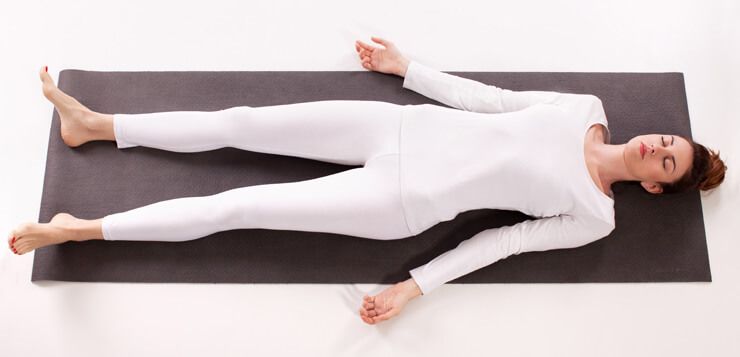
The activity of Mindful Seeing may be helpful to anyone who identifies with this.
It is a simple exercise, requiring only a window with some kind of a view. The facilitator guides the group following these steps:
- Step 1: find a space at a window where there are sights to be seen outside;
- Step 2: look at everything there is to see. Avoid labeling and categorizing what you see outside the window; instead of thinking “bird” or “stop sign,” try to notice the colors, the patterns, or the textures;
- Step 3: pay attention to the movement of the grass or leaves in the breeze. Notice the many different shapes present in this small segment of the world you can see. Try to see the world outside the window from the perspective of someone unfamiliar with these sights;
- Step 4: be observant, but not critical. Be aware, but not fixated;
- Step 5: if you become distracted, gently pull your mind away from those thoughts and notice a color or shape again to put you back in the right frame of mind.
There’s an extensive group treatment plan by Fleming and Kocovski’s (2007) that offers a glimpse into how to use mindfulness in any kind of group session and provides detailed worksheets, exercises, and handouts which can provide inspiration and guidance for your group facilitation.
4. Mindful Listening
This last activity is extracted from the Positive Psychology Toolkit© and introduces mindful listening as a group exercise.
Mindful listening is an important skill and can be a great group mindfulness exercise. In general, people thrive when they feel fully “heard” and “seen,” and mindful listening offers a break from focusing on the self or our own response.
Instead, this form of listening can create an inner stillness where both parties feel free of preconceptions or judgments, and the listener is not distracted by inner chatter whilst learning valuable positive communication skills.
The Mindful Listening exercise involves these steps:
- Step 1: invite participants to think of one thing they are stressed about and one thing they look forward to;
- Step 2: once everyone is finished, each participant takes their turn in sharing their story with the group;
- Step 3: encourage each participant to direct attention to how it feels to speak, how it feels to talk about something stressful as well as how it feels to share something positive;
- Step 4: participants are instructed to observe their own thoughts, feelings, and body sensations both when talking and when listening;
- Step 5: after each participant has shared, you can break into small groups and answer the questions below. Next, regroup and have a discussion and debrief with the following questions.
Those questions are:
- How did you feel when speaking during the exercise?
- How did you feel when listening during the exercise?
- Did you notice any mind-wandering?
- If so, what was the distraction?
- What helped you to bring your attention back to the present?
- Did your mind judge while listening to others?
- If so, how did “judging” feel in the body?
- Were there times where you felt empathy?
- If so, how did this feel in the body?
- How did your body feel right before speaking?
- How did your body feel right after speaking?
- What are you feeling right now?
- What would happen if you practiced mindful listening with each person that you spoke with?
- Do you think mindful listening would change the way you interact and relate with others?
- How would it feel if you set the intention to pay attention with curiosity, kindness, and acceptance to everything you said and everything you listened to?
In addition to the group activities here, you may also be interested in trying gentle yoga or Qigong, both of which involve a deliberate posture, purposeful breath, and an emphasis on awareness. Both of these activities have provided evidence for the benefits of mindfulness (Newsome, Waldo, & Gruszka, 2012).
5 Fun Mindfulness Interventions, Techniques, and Worksheets for Adults

If the idea of participating in group mindfulness exercises is anxiety-provoking or stressful for yourself or your clients, then diving into mindfulness practice alone can be the best way to proceed.
Here are six exercises that can help to build mindfulness in different ways.
1. The Observer Meditation
The Observer Meditation (download the PDF here) looks at why it is worthwhile to detach from our internal thoughts and feelings—an important part of Acceptance and Commitment Therapy, in which mindfulness plays a large role.
Adopting an Observer perspective can help us put some distance between who we are and problematic domains in life that we might be overidentifying with.
To begin the exercise, follow these steps:
- Take a comfortable seated position, and listen to the script.
- Let yourself settle into your body and your mind.
- Try to let go of thoughts and clear the mind of its usual considerations.
- Focus your attention first to the room you’re sitting in. Picture yourself from the outside as you sit, exactly as an outsider might. Next, shift your attention inwards into your skin. Try and feel your skin as you are sitting in the chair.
- Try to envision the shape that your skin is making as you sit in contact with the chair, shifting your awareness toward any physical sensations you are experiencing. As you feel each one, acknowledge its existence before letting your consciousness let go of it and move on naturally.
If you find any emotions coming up, recognize them and create space for them. Then bring your attention back to your observing self—your feelings and thoughts are there, but you are separate from them, noticing them. This is the “Observer you”.
This exercise can be continued for as long as desired and there are many stages you can work through that will help you practice being an observer of yourself. It is not an easy exercise at first because we are often habitually inclined to react to and over-identify with our feelings.
The goal of evoking the Observing Self is to enter a separate mode which allows you to step back from yourself and your experiences. Simultaneously, however, you are connecting with a deeper constant self that is unaffected by dynamic emotions.
2. Five Senses Exercise
This exercise is called “five senses,” and provides guidelines on practicing mindfulness quickly in nearly any situation. All that is needed is to notice something you are experiencing with each of the five senses.
Follow this order to practice the Five Senses:
- Notice five things that you can see.
Look around you and bring your attention to five things that you can see. Pick something that you don’t normally notice, like a shadow or a small crack in the concrete.
- Notice four things that you can feel.
Bring awareness to four things that you are currently feeling, like the texture of your pants, the feeling of the breeze on your skin, or the smooth surface of a table you are resting your hands on.
- Notice three things you can hear.
Take a moment to listen, and note three things that you hear in the background. This can be the chirp of a bird, the hum of the refrigerator, or the faint sounds of traffic from a nearby road.
- Notice two things you can smell.
Bring your awareness to smells that you usually filter out, whether they’re pleasant or unpleasant. Perhaps the breeze is carrying a whiff of pine trees if you’re outside, or the smell of a fast-food restaurant across the street.
- Notice one thing you can taste.
Focus on one thing that you can taste right now, at this moment. You can take a sip of a drink, chew a piece of gum, eat something, notice the current taste in your mouth, or even open your mouth to search the air for a taste.
This is a quick and relatively easy exercise to bring you to a mindful state quickly. If you only have a minute or two, or don’t have the time or tools to try a body scan or fill out a worksheet, the five senses exercise can help you or your clients bring awareness to the current moment in a short amount of time.
3. The 3-Step Mindfulness Exercise

Step 1: step out of “auto-pilot” to bring awareness to what you are doing, thinking, and sensing at this moment.
- Try to pause and take a comfortable but dignified posture. Notice the thoughts that come up and acknowledge your feelings, but let them pass. Attune yourself to who you are and your current state.
Step 2: bring awareness to the breathing for six breaths or a minute.
- The goal is to focus attention on one thing: your breath. Be aware of the movement of your body with each breath, of how your chest rises and falls, how your belly pushes in and out, and how your lungs expand and contract. Find the pattern of your breath and anchor yourself to the present with this awareness.
Step 3: expand awareness outward, first to the body then to the environment.
- Allow the awareness to expand out to your body. Notice the sensations you are experiencing, like tightness, aches, or perhaps a lightness in your face or shoulders. Keep in mind your body as a whole, as a complete vessel for your inner self;
- If you wish, you can then expand your awareness even further to the environment around you. Bring your attention to what is in front of you. Notice the colors, shapes, patterns, and textures of the objects you can see. Be present at this moment, in your awareness of your surroundings.
When you are ready to finish the exercise, open your eyes slowly and try to carry that mindfulness with you as you go about your day.
4. Mindful Walking Down The Street Technique
One core process that can be influenced by mindfulness practice is our ability to observe our thoughts, emotions, and sensations without reacting to fix them, hide them, or solve them. This awareness creates room for choice between impulses, and action which can help develop coping skills and positive behavioral change.
- In the first step of this intervention, the facilitator helps the client visualize a scenario in which they are walking down a familiar street when they look up and see someone they know on the other side of the street. They wave, however, the other person doesn’t respond and continues to walk right past.
- In the second step, the facilitator prompts reflection from the client by asking a series of questions:
1. As you were0 .imagining, did you notice any of your thoughts?
2. As you were imagining, did you notice any of your emotions?
- In the third and final step, the facilitator asks the client to reflect on the series of emotions and thoughts that came up, how this affects their behavior, whether the exercise was helpful, and for any final comments.
5. The 3-Minute Breathing Space
Unlike meditations or a body scan, this exercise is quick to perform and useful in getting a mindfulness practice started.
With meditations and the body scan, thoughts often pop up, and keeping a quiet and clear head can be a challenge. This last exercise can be the perfect technique for those with busy lives and minds. The exercise is broken into three sections, one per minute, and works as follows:
- The first minute is spent on answering the question “how am I doing right now?” while focusing on the feelings, thoughts, and sensations that arise, and trying to give these words and phrases.
- The second minute is spent on keeping awareness of the breath.
- The last minute is used for an expansion of attention outward from the breath, feeling the ways in which your breathing affects the rest of the body.
Keeping a quiet mind can be rather challenging, and thoughts will often pop up. The idea is not to block them, but rather to let them come into your mind and then disappear again. Try to just observe them.
All the exercises mentioned above can be used for the benefit of yourself, individual clients, and even in group settings. They are beneficial to all client groups; however, some will be better suited than others, so a method of open-minded trial and error can often be necessary.
The most important part of mindfulness is to recognize that it is a training of the mind, and like any exercise will take some time to see the benefits. The trick is to persevere, approach the process with self-compassion, and allow for reflection, change, and flexibility between different techniques and interventions.
Introducing Dialectical Behavioral Therapy (DBT)
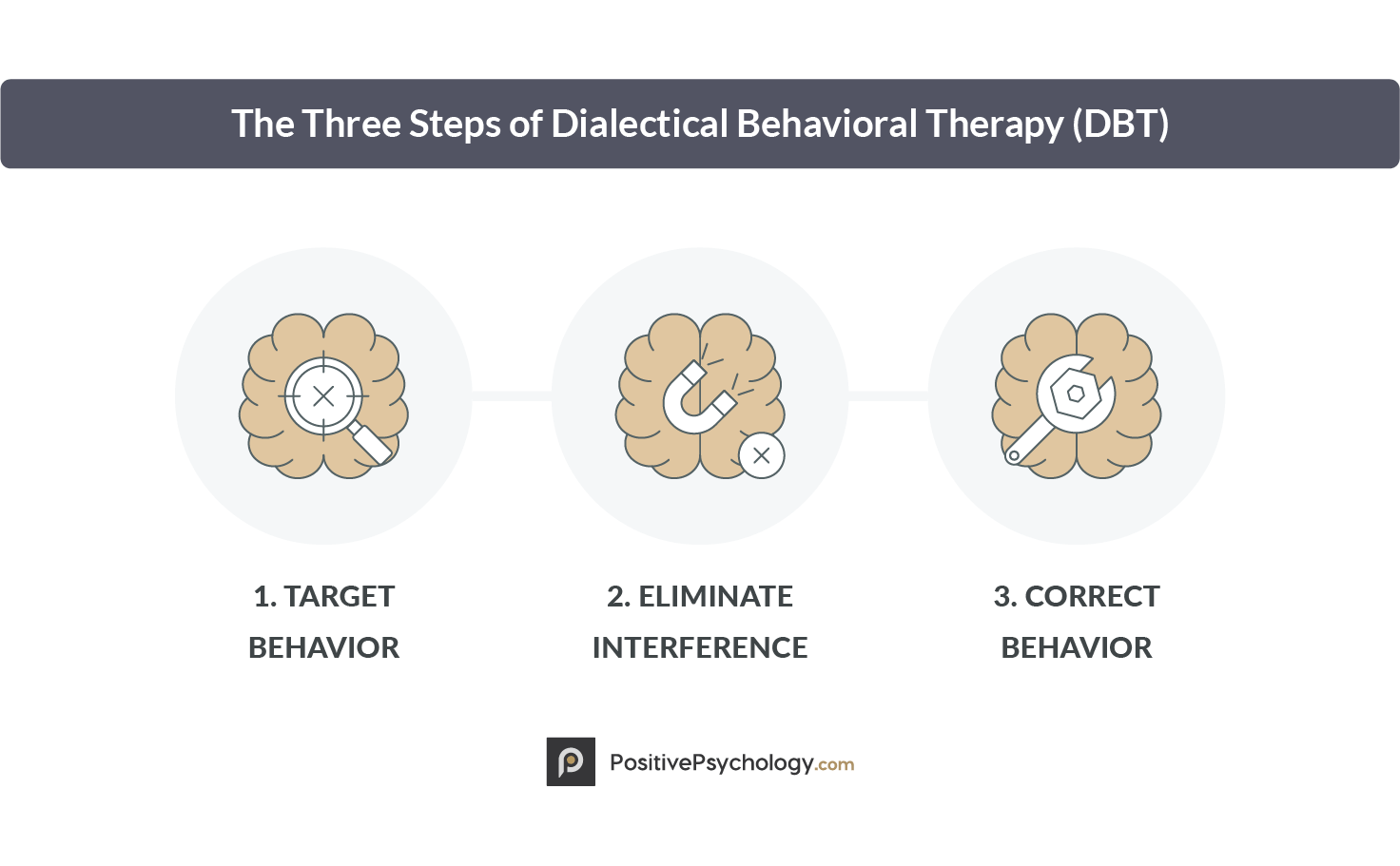
Dialectical Behavioral Therapy is characterized by the following steps:
- The first priority for DBT treatment is to target the life-threatening behaviors that often manifest in people with severe mental health problems;
- Second, therapists aim to eliminate the behaviors that interfere with therapy, such as refusal to strive for the goals of DBT, missing sessions, etc.;
- Next, DBT therapists aim to correct the behaviors that interfere with the client’s quality of life, including non-productive relationship behaviors, communication problems, and bad financial decision-making.
Mindfulness is a core skill taught in DBT, as it helps clients gain awareness of their own thoughts and feelings (Jennings & Apsche, 2014).
The Effectiveness of Dialectical Behavioural Therapy-Mindfulness
In one study, Dialectical Behavioral Therapy-Mindfulness (DBTM) training was added to general psychiatric treatment to test its effectiveness. A module on mindfulness was developed to help clients achieve the “wise mind,” and focused on two sets of skills—the “what” skills and the “how” skills (Soler et al., 2012).
What are the “What” skills?
This first set of skills is meant to help the client learn how to:
- Simply observe their experience.
- Describe their experience using a verbal label.
- Be fully present in the moment and in their actions without feeling self-conscious.
These skills allow the client to be aware of what is happening to them and of their part in their own experience. Becoming aware of their own thoughts and grounded in the present forms the foundation for the next set of “how” skills.
How Do the “How” Skills Work?
The “how” skills relate to the goal of teaching clients how to observe, describe, and participate in their own experience. This set of skills is intended to help clients:
- Learn to have experiences in a non-evaluative and non-judgmental manner.
- Focus on one thing at a time and learn to bring their attention back to the target when they go off course.
- Be effective, or keep their focus on their goals regardless of their current mood (Soler et al., 2012).
The clients were also taken through a series of other mindfulness interventions including mindful breathing, the body scan, and other simple awareness practices.
Individuals in this study who received DBTM training, in addition to the usual treatment, had enhanced benefits compared to the group who received only the usual psychiatric treatment: the more minutes an individual spent practicing mindfulness, the greater the improvements in psychiatric symptoms (Soler et al., 2012).
DBT clearly has something to teach us all in its application of a wide range of mindfulness techniques and exercises. Let’s take a look at a few easily applicable examples.
Mindfulness is not only beneficial for adults, but it can also offer a great lot to children and young people. Recent research shows that simple mindfulness activities can help train children to become more attuned to their internal and external moment-to-moment experiences, i.e., becoming more mindful.
In a study by Flook et al. (2015), pre-schoolers engaged in mindfulness activities, such as one called “Belly Buddies.” During this activity, children listened to music while noticing the sensation of a small stone on their stomachs, rising and falling with each breath. Through practicing this activity, children became more attuned to their bodies, breath, and music.
Saltzman (2011) designed the PEACE mindfulness exercise (shown in the image), which can work better for teens. Children are taught to respond to a particular situation by performing each action corresponding to a letter in PEACE. Using this acronym, children learn to respond to situations by making wise decisions rather than reacting.
It is advised to practice this exercise in minor upsetting situations before employing these steps to handle more extreme situations. The more they practice, the more PEACE they will have (Saltzman, 2011).
5 Simple Mindfulness Exercises from Dialectical Behavioural Therapy
These five exercises are quick and easy and can be put into practice every day.
1. Observe a Leaf for Five Minutes

Pick up a leaf, hold it in your hand, and give it your full attention for five minutes.
Notice the colors, the shape, the texture, and the patterns. This will bring you into the present and align your thoughts with your current experience.
2. Mindful Eating for Four Minutes
As with the raisin exercise described above, this exercise calls for mindful eating.
Pay attention to what you are holding, notice the feeling of it in your hands. Once you have noticed the texture, the weight, the color, etc., bring your awareness to the smell.
Finally, move on to eating, but do so slowly and with concentrated attention. Notice the taste and its texture against your tongue. This exercise may help you discover new experiences with familiar foods.
Download the exercise here as a PDF.
3. Observe Your Thoughts for 15 Minutes
This exercise is a staple of mindfulness, designed to simply enhance your awareness of your own thoughts.
To begin, sit or lie down in a comfortable position and try to let all tension in your body dissipate. Focus on your breathing first, then move your awareness to what it feels like to be in your body, and finally move on to your thoughts.
Be aware of what comes into your head, but resist the urge to label or judge these thoughts. Think of them as a passing cloud in the sky of your mind.
If your mind wanders to chase a thought, acknowledge whatever it was that took your attention and gently guide your attention back to your thoughts.
4. Mindfulness Bell Exercise for Five Minutes
In this exercise, you begin by closing your eyes and listening for the cue. When you hear it, your aim is to focus your attention on the sound and continue your concentration until it fades completely. This exercise helps you to keep yourself firmly grounded in the present. You can use the audio below:
5. Stare at the Center
The goal is simple: to focus your attention on the center of the shifting pattern of color. You can let your mind wander freely, noticing whatever thoughts come into your head but staying in the present.
This experience is similar to the well-known phenomenon of the quiet fixation that results from staring at a candle flame or a campfire.
The same focus and deep thought can be brought on by this exercise, but be careful not to lose yourself in thought, and instead stay present with the moment and let your thoughts pass by.
This exercise requires a video to practice, you can use the one below:
Mindfulness Techniques for Depression, Anger, Addiction, and Anxiety
Mindfulness has been a crux of therapy for patients with borderline personality disorder, and it also has applications for people without a diagnosis of mental illness.
People anywhere on the mental health spectrum can benefit from mindfulness techniques. It helps regulate emotions and can be a helpful resource for management and coping (Arch & Craske, 2006; Dubert, Schumacher, Locker, Gutierrez, & Barnes, 2016).
Mindfulness Techniques for Depression
Mindfulness is used in the treatment of depression to reduce symptoms and lowers the risk of debilitating relapse. One study with 11 individuals suffering from depression concluded that there are three keys for making mindfulness effective in the treatment of depression (Nauman, 2014 June):
- Mindfulness helps patients learn to be present in the moment, which helps them take a moment to pause, notice their own thoughts and feelings, and choose a response that is not based in their present emotions.
- Mindfulness teaches patients that it is okay to say “no” to others, which helps them balance their own lives and enhance self-confidence.
- Mindfulness allows patients to be present with others, meaning that they are more aware of the state of their relationships and are better able to acknowledge their own communication problems and thus more effectively relate with others.
We’ve described practices focused on breathing and muscle relaxation already (such as the Three Minute Breathing Space or the Body Scan).
If you are interested in learning more about mindfulness techniques for treating depression, you can look into Mindfulness-Based Cognitive Therapy.
Alternatively, watch this inspiring TEDtalk by Zindel Segal who explains the mindful approach needed to not only address depression but also manage recovery and reduce the risk of relapse.
By continuing to think through your feelings during meditation, you can stop and redirect your attention back to awareness of sensations in your body. Segal offers many other tips on bringing awareness to our physical experience.
At one point, Segal asks the audience to think about their feet, and later, to experience the sensation of their feet. The difference is profound and offers a gateway to accessible mindfulness and meditation.
Mindfulness Techniques for Anger
Mindfulness techniques can also discharge acute or chronic anger. As one of our strongest emotions, anger can be hard to view objectively and defuse. Mindfulness helps create space between stimulus and an immediate, impulsive response.
This technique can help you deal with the experience of anger (Cullen, Pons, & Mindful Staff, 2016):
- First, sit in a comfortable position with your eyes closed and notice the places where your body is touching the floor, cushion, or chair;
- Draw in a few deep breaths, completely filling up your lungs and quickly exhaling;
- Think back to a time that you recently experienced anger, preferably a mild or quickly addressed episode. Allow yourself to experience the anger you felt in that moment;
- Disregard any other feelings that come up with this memory, like guilt or sadness;
- Turn your attention to how you are experiencing anger in your body. Notice whether any parts of your body are manifesting your anger with sensations like warmth or cold, the intensity of these reactions and whether they change as you observe them or move through your body;
- Bring compassion to the anger. This can be a difficult step, but remind yourself that anger is a natural human emotion that affects us all at one point or another. Try to hold your anger “like a mother cradling a newborn,” with love and understanding;
- Say goodbye to your anger. Gradually bring your attention back to your breath and rest here for a while until your emotions have subsided or settled down;
- Reflect on the experience. Notice the sensations that this exercise brought up in your body. Notice if they changed through the process. Take note of whether you applied compassion to your anger, and if so, how you did it. Think about what happened to the anger when you showed it compassion.
This exercise can be repeated as many times as necessary. It is recommended to work your way up from milder experiences of anger to the most intense and memorable episodes.
Practicing this technique can help you to defuse chronic anger in a rather counterintuitive manner: by accepting and mindfully feeling your anger, you can take control of the experience and compassionately address it.
For other resources and techniques on dealing with anger through mindfulness, you can try our Leaves on a Stream MP3. Alternatively, you can follow this 20 minutes guided anger management mindfulness meditation:
Mindfulness Techniques for Anxiety
Mindfulness techniques can also aid an undiagnosed individual who suffers from occasional (or not-so-occasional) anxiety.
A meta-analysis in 2010 advocated for the effectiveness of mindfulness exercises on anxiety and depression. The researchers found that mindfulness-based therapy was moderately effective for treating anxiety and improving mood and that the effects lasted beyond the initial improvements (Hofmann, Sawyer, Witt, & Oh, 2010).
To begin applying mindfulness to your anxiety, or that of your clients, Mindful.org has provided a short description of 10 attitudes that will help build the foundation for successfully addressing anxiety:
- Volition or intention
This is the building block of all other attitudes. First, you must bring your focus to the intention of working with your anxiety. - Beginner’s mind
This refers to a mindset that is ready to see from a new perspective and consider new ideas with regards to dealing with anxiety. - Patience
This is a very important attitude to cultivate since it can broaden your perspective and help you persevere when you run into obstacles on your journey. - Acknowledgment
Having the mindset of acknowledgment means that you take each experience for what it is; you accept what is happening and are secure in the knowledge that it will pass. - Non-judgment
This attitude involves experiencing your present moment without evaluating and judging it. It means you let go of value judgments about yourself and how you are feeling and allows you to begin your work from a more balanced starting point. - Non-striving
This attitude refers to the willingness to accept a situation or experience as it is, without trying to change it. To combat your anxiety, you must first be present with it and accept your current state. - Self-reliance
The mindset of self-reliance is characterized by trusting yourself and your ability to handle your feelings. Cultivating your self-reliance will allow you to more easily acknowledge, experience, and let go of your anxiety. - Letting be or allowing
Similar to the attitude of non-striving, letting be or allowing refers to the mindset of allowing yourself to feel anxiety. Often it is more effective to work with anxiety than expend energy trying to deny or fight it. - Self-compassion
As mentioned earlier, showing yourself compassion is an important part of mindfulness. Being kind to yourself, as you would be kind to a dear friend or family member, can help you to decrease your anxiety by being a support for yourself. - Balance and equanimity
These attitudes allow wisdom to develop through a broadening of perspective. They require an understanding that your whole experience is more than your current feelings, whether positive or negative.
Take note of how you feel. Afterward, reflect on your experience and describe it, with a special focus on your feelings during the process.
For a rather more simple method of applying mindfulness to anxiety, you can try this quick exercise:
- Focus on the sensations that arise in your body when you are anxious;
- Be present and with the moment;
- Allow yourself to think the anxious and distressing thoughts.
By recognizing these thoughts for what they are, you may come to realize that they are not true, and consequently be able to let them go (Hofmann, 2013). If you are interested in trying other mindfulness exercises to address anxiety, you can check out our extensive range of mindfulness articles.
For more information on anxiety, and how to approach dealing with it through mindfulness, you can also listen to Dr. Kim Taylor Show. She clarifies the signs and symptoms of anxiety and offers techniques to treat and manage anxiety.
Mindfulness Techniques for Addiction
Addiction is a serious issue that should be addressed by a mental health professional or an institution that has proven effective in treating addiction. However, there are some mindfulness techniques you can use to supplement addiction management.
Relevant reading: 26 Mental Health Exercises & Interventions Based on Science
Mindfulness has been shown to help those suffering from addiction by decreasing their usage and reducing the occurrence of more long-term psychiatric problems (“Extinguish addiction,” 2016).
The practice of mindfulness increases the number and strength of connections in the brain, allowing us to become more aware of our body and more effective at regulating our emotions. It also helps individuals recognize, tolerate, and cope with negative emotions (“Extinguish addiction,” 2016).
One mindfulness technique is specifically crafted for those suffering from cravings. There is a theory that people develop cravings through incentive sensitization, a process that occurs in four steps:
- Repeated exposure to an addictive substance results in hypersensitization, meaning that the substance or substances will have a greater effect on neurobehavioral response in the future;
- Hypersensitization leads to incentive salience, a desire for the substance that is well beyond a simple preference;
- The incentive salience all but guarantees the individual will repeat the behavior;
- This unconscious process develops into a conscious craving for the substance.
The result of this process is a very strong association between the substance and the “reward” (the feeling an individual gets when using the substance).
Following this theory, it is not the fault of the individual that they experience cravings. They are not punished with cravings for being weak, or lazy, or unwilling to stop. Cravings are like intruders on the mind, uninvited guests that try to influence behavior.
Thus, those struggling with addiction can use mindfulness to pause, identify the cravings and label them as intruders, and thereby give themselves permission to ignore them. Mindfulness can turn the cravings into passing thoughts that may disappear simply by acknowledging their presence (“Mindfulness meditation,” 2017).
For more information and a guided meditation on dealing with addiction cravings you can watch this short video by Jessica Graham:
If you are looking for more comprehensive information on the neurological origins of our addictive behaviors and how we can challenge addiction at the level of the brain, you can watch this fascinating talk by Dr. Judson Brewer:
A Take-Home Message
I hope that I provided you with enough techniques, exercises, and activities to bring you and your clients the benefits of mindfulness.
Mindfulness can be useful to a variety of populations. It is a relatively easy practice with significant results on the brain that can enhance the quality of life, self-confidence, and peace of mind of those using it.
If you haven’t yet, consider trying an activity mentioned above. Over time, the exercises help increase the awareness of our bodies, our thoughts, and our selves.
Feel free to share your experiences with mindfulness in the comments below, as well as any techniques or exercises that you use to cultivate mindfulness in your life.
We hope you enjoyed reading this article. Don’t forget to download our three Mindfulness Exercises for free.
- Arch, J. J., & Craske, M. G. (2006). Mechanisms of mindfulness: Emotion regulation following a focused breathing induction. Behaviour Research and Therapy, 44, 1849-1858.
- Brach, T. (2016, August). How to start a mindfulness meditation group. Retrieved from www.tarabrach.com
- Cullen, M., Pons, G. B., & Mindful Staff. (2016, January 25). Mindfulness of anger. Retrieved from www.mindful.org/mindfulness-of-anger/
- Dubert, C. J., Schumacher, A. M., Locker, L., Gutierrez, A. P., & Barnes, V. A. (2016). Mindfulness and emotion regulation among nursing students: Investigating the mediation effect of working memory capacity. Mindfulness 7, 1061-1070.
- Extinguish addiction with mindfulness. (2016). Retrieved from www.mindfulmuscle.com
- Fleming, J. E., & Kocovski, N. L. (2007). Mindfulness and acceptance-based group therapy for social anxiety disorder: A treatment manual.
- Flook, L., Goldberg, S. B., Pinger, L., & Davidson, R. J. (2015). Promoting prosocial behavior and self-regulatory skills in preschool children through a mindfulness-based kindness curriculum. Developmental Psychology, 51(1), 44.
- Hofmann, G. (2013). Using mindfulness to treat anxiety disorders. Retrieved from www.psychcentral.com/blog/archives/2013/01/28/using-mindfulness-to-treat-anxiety-disorders/
- Hofmann, S. G., Sawyer, A. T., Witt, A. A., & Oh, D. (2010). The effect of mindfulness-based therapy on anxiety and depression: A meta-analytic review. Journal of Consulting and Clinical Psychology, 78, 169-183.
- Jennings, J. L., & Apsche, J. A. (2014). The evolution of a fundamentally mindfulness-based treatment methodology: From DBT and ACT to MDT and beyond.
- International Journal of Behavioral Consultation and Therapy 9(2), 1-3.
- Kocovski, N. L., Fleming, J. E., Hawley, L. L., Huta, V., & Antony, M. M. (2013). Mindfulness and acceptance-based group therapy versus traditional cognitive-behavioral group therapy for social anxiety disorder: A randomized controlled trial. Behaviour Research and Therapy, 51, 889-898.
- Linehan, M. M. (1993). Cognitive-Behavioral Treatment of Borderline Personality Disorder. New York: Guilford Press.
- Mindfulness meditation for addiction cravings. (2017). Retrieved from www.alcoholrehab.com Nauman, E. (2014, June 2). Three ways mindfulness reduces depression. Retrieved from www.greatergood.berkeley.edu
- Newsome, S., Waldo, M., & Gruszka, C. (2012). Mindfulness group work: Preventing stress and increasing self-compassion among helping professionals in training. The Journal for Specialists in Group Work, 1-15.
- Saltzman, A. (2011). Mindfulness: A guide for teachers. The Center for Contemplative Mind in Society. Retrieved from: http://www. contemplativemind. org/Mindfulness-A_Teachers_Guide. pdf.
- Soler, J., Valdepérez, A., Feliu-Soler, A., Pascual, J. C., Portella, M. J., Martín-Blanco, A., & … Pérez, V. (2012). Effects of the dialectical behavioral therapy-mindfulness module on attention in patients with borderline personality disorder. Behaviour Research and Therapy, 50(2), 150-157.
- Sundquist, J., Lilja, A., Palmér, K., Memon, A., Wang, X., Johansson, L. M., & Sundquist, K. (2015). Mindfulness group therapy in primary care patients with depression, anxiety and stress and adjustment disorders: randomized controlled trial. The British Journal of Psychiatry, 206(2), 128-135.
- www.dharmawisdom.org
- www.drivingpeace.com
- www.dummies.com
- www.mindful.org
- www.mindfulnessexercises.com
- www.smartrecovery.org
- www.stillmind.com.au
- www.therapistaid.com
Let us know your thoughts
Read other articles by their category
- Body & Brain (49)
- Coaching & Application (57)
- Compassion (26)
- Counseling (51)
- Emotional Intelligence (24)
- Gratitude (18)
- Grief & Bereavement (21)
- Happiness & SWB (40)
- Meaning & Values (26)
- Meditation (20)
- Mindfulness (45)
- Motivation & Goals (45)
- Optimism & Mindset (34)
- Positive CBT (28)
- Positive Communication (20)
- Positive Education (47)
- Positive Emotions (32)
- Positive Leadership (18)
- Positive Parenting (4)
- Positive Psychology (33)
- Positive Workplace (37)
- Productivity (16)
- Relationships (46)
- Resilience & Coping (36)
- Self Awareness (21)
- Self Esteem (38)
- Strengths & Virtues (31)
- Stress & Burnout Prevention (34)
- Theory & Books (46)
- Therapy Exercises (37)
- Types of Therapy (64)
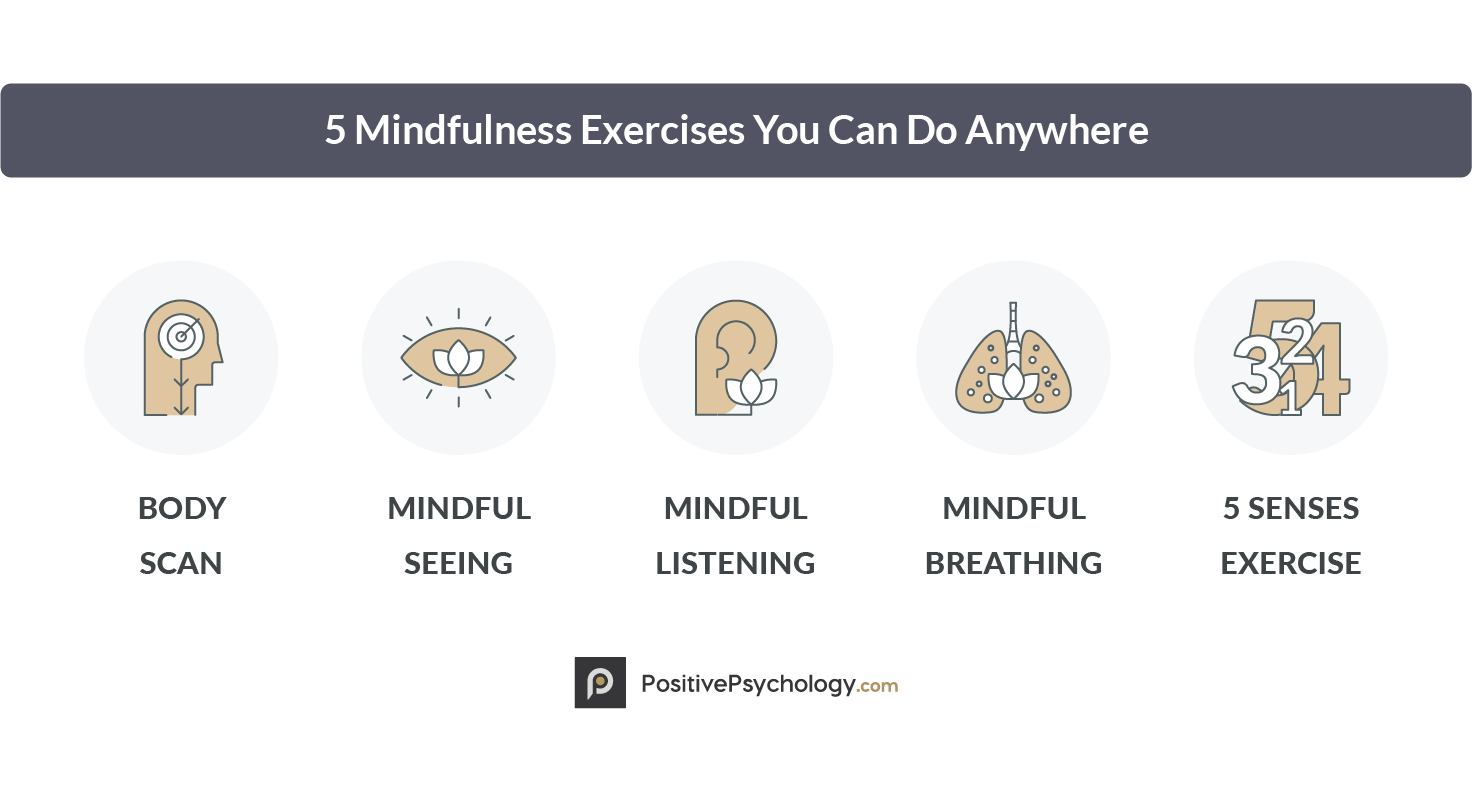
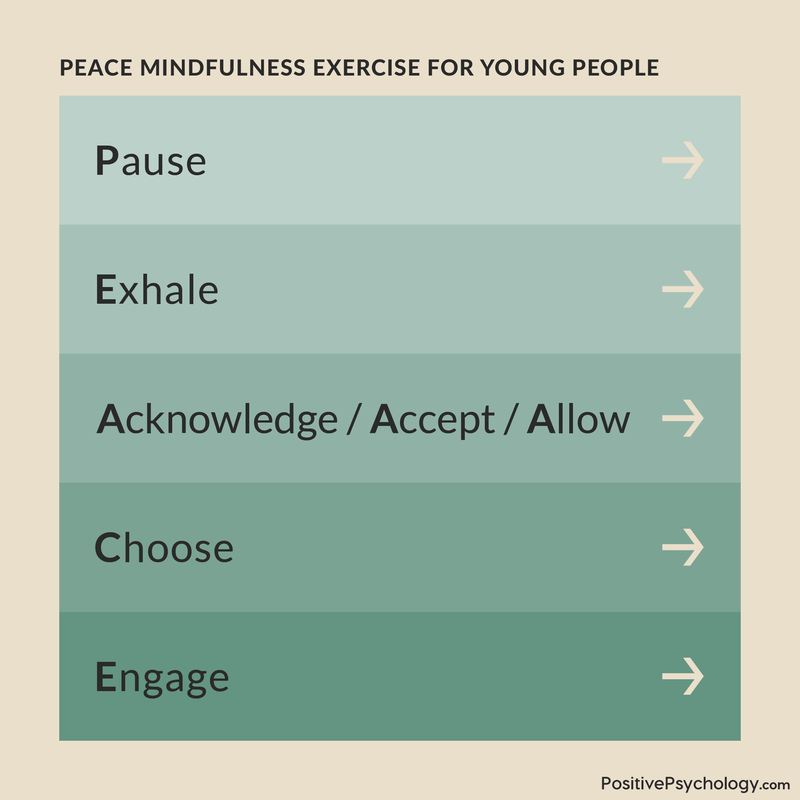
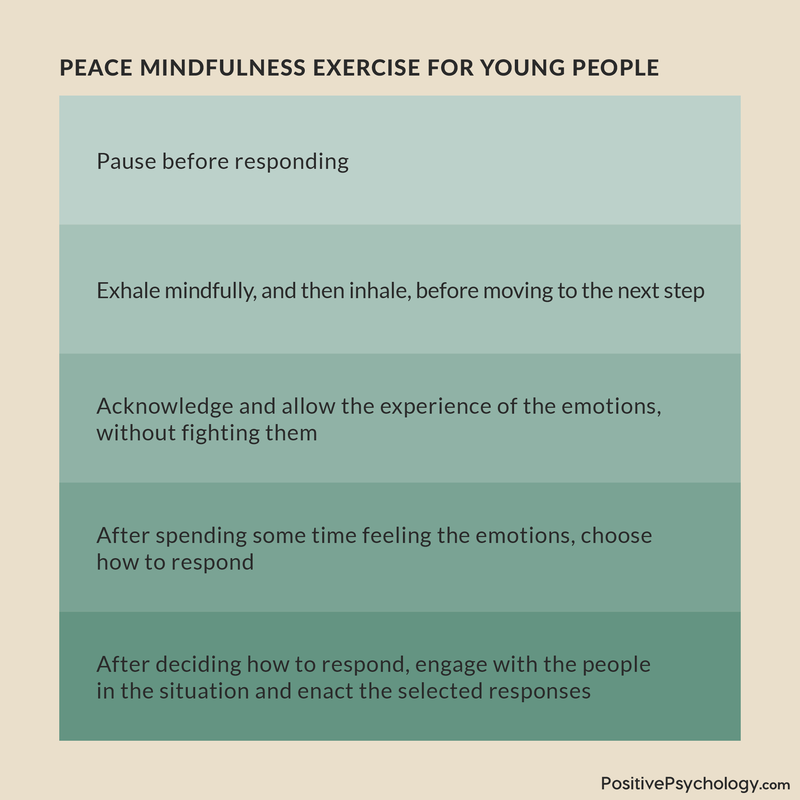
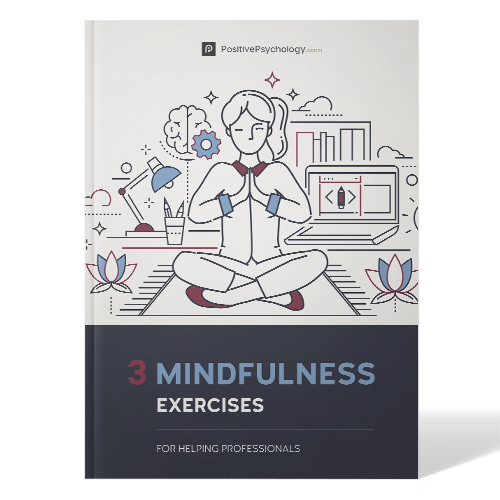
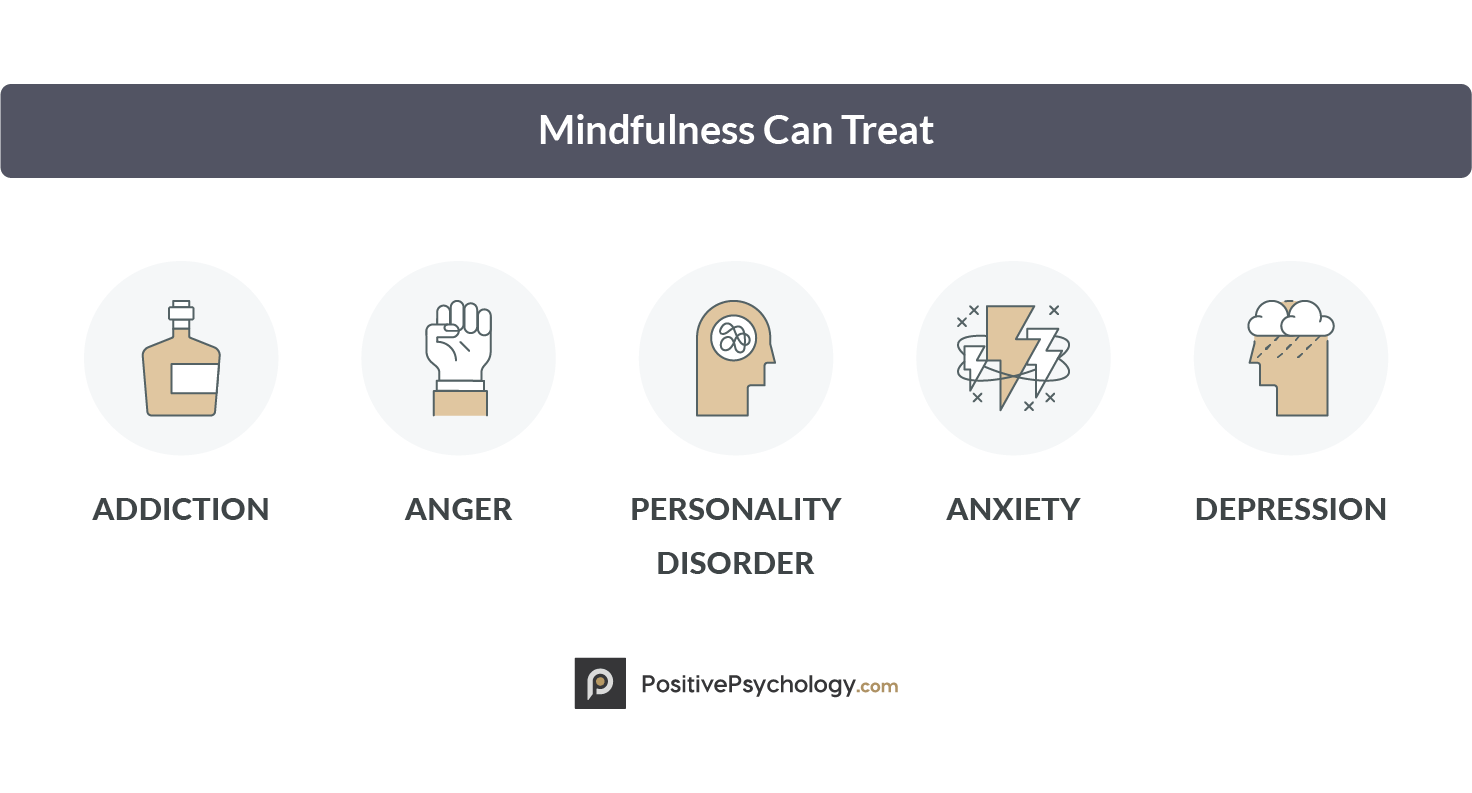
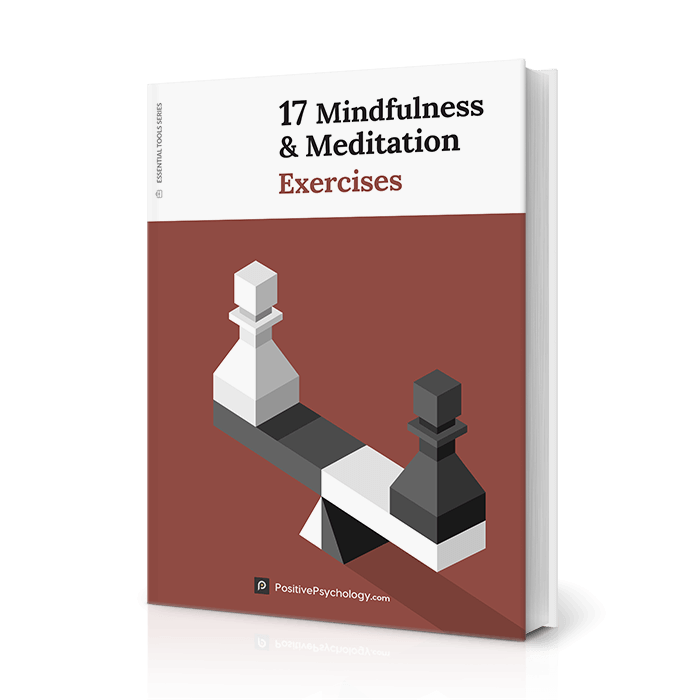



What our readers think
It was very helpful
It was very helpful it thought me alots of things
The Exercise was very helpful
So helpful ♥️..thank you so much
I listened to your meditation audio and did enjoy, thank you, i feel more relaxed now. well done!
For a long time I’ve been searching all these techniques and I found them all in one article
I hope to become mindful of my present situation
yeah its very helpful
Lots of great ideas of meditation techniques and so much different ways of thinking and working on these techniques. Very great tactics to follow thank you so very much.